With its proposals triggering a lot of heat and dust in Jammu and Kashmir, the Delimitation Commission is expecting an extension. Khalid Bashir Gura talked to diverse stakeholders in Kashmir and Jammu to offer an idea about the new electoral map of the erstwhile state
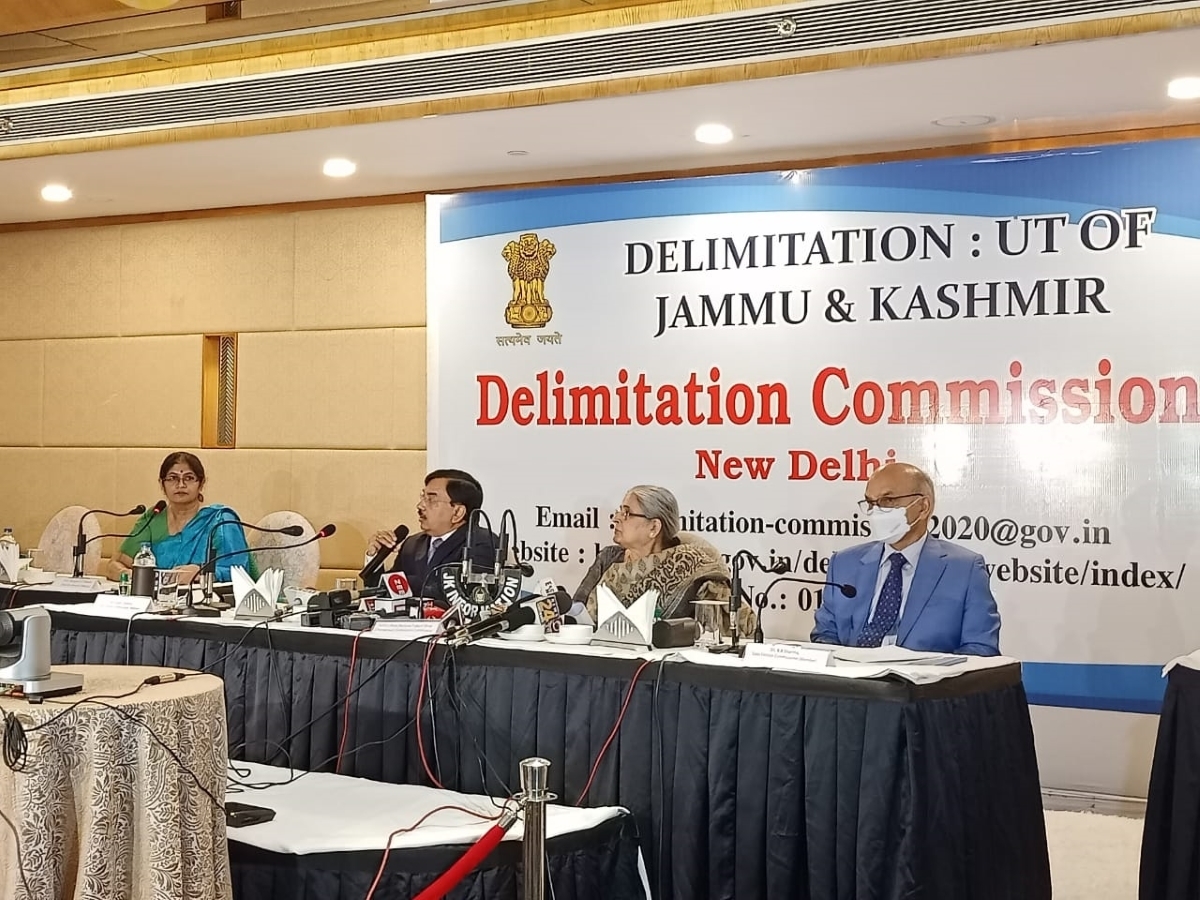
“When the speaker of the assembly of the erstwhile state of Jammu and Kashmir would call MLA Sangrama, I, Syed Basharat Ahmed Bukhari would stand up with pride,” said former lawmaker, who represented the segment for two consecutive terms on PDP mandate. Initially migrating to National Conference, he is now with the Peoples’ Conference. “The speaker would not address me by my name but by the decades-old constituency.”
Now in the new electoral map crafted by the Delimitation Commission, like eighteen other constituencies across Jammu and Kashmir, Sangrama ceases to exist as a name.
“Sangrama’s major portion has gone to Tangmarg, 20 per cent to Sopore and 10 per cent to Baramulla. Sangrama itself has been merged with Sopore,” said Shuaib Nabi Lone, also a former lawmaker from the same segment, then representing Congress. He is upset with the disparities in carving out constituencies.
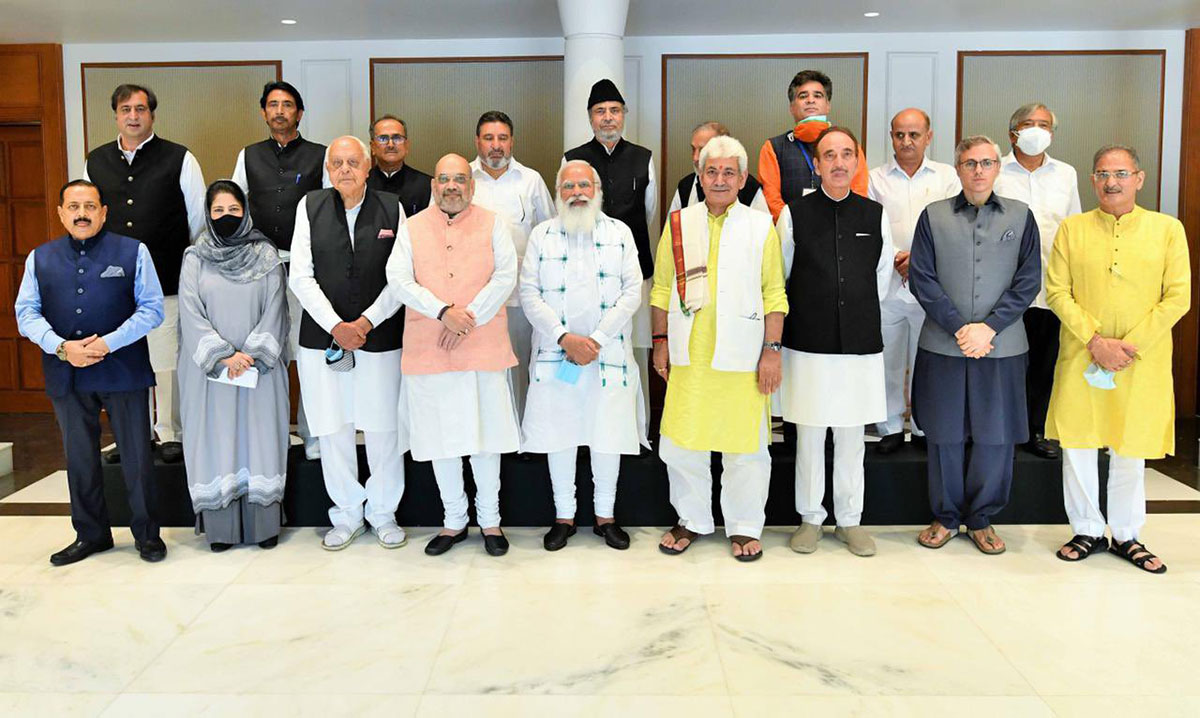
Vanished
Before winding up a two-year-long exercise of delimitation, in its second draft, which outlines the new electoral map, the erstwhile representatives are fuming at the rationale driving the exercise. The new electoral cartography suggests that ten constituencies in Kashmir and nine in the Jammu region will cease to exist. They will be merged, either with the existing constituencies or added, in parts or whole, to the new constituencies.
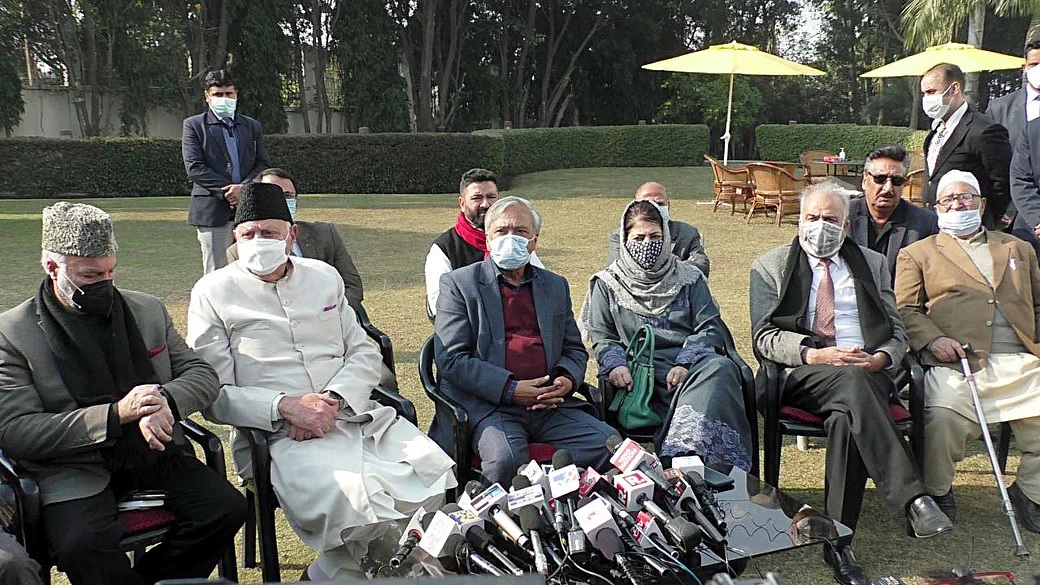
Even though at outset, the Commission had clarified that it was prioritizing population as well as geographical continuity, facilities of communication and public inconveniences, however, according to many former lawmakers both universally as well as constitutionally, population alone has been a principal determinant in redrawing electoral maps.
The stakeholders insist that the Delimitation cartographers have strictly gone by the wishes and whims of the appointing authority. “They have seen people they like or hate and not the people who are eventually to be represented in the house,” one political activist said, requesting anonymity. “It may suit some of us, right now, but eventually the people would be the losers.”
“Some of the constituencies have been created and some names have been binned. There has to be contiguity in constituencies. What is the uniform code of all this exercise? You are breaking historical constituencies like Gulmarg, Kokernag,” fumed Bukhari. “The constituencies carved out are bereft of any logic.”
As the boundaries have been redrawn, the areas falling under Sangrama have been added to Tangmarg, which in itself is a new constituency as Gulmarg has been binned. “The constituency has been cut and crafted vertically now which may give rise to many problems. Even though, the population should have been a priority but even crafting constituencies according to geography and natural resources sans logic. Some areas have been merged with Wular Lake without contiguity. Similarly, Kunzer, the new segment will have Kawarhama, Kunzar tehsils, Wanigam Payeem, Tilgam, Tapper, Hamray, from Pattan tehsil,” he said, insisting its population is less than one lakh.
The natural resources like rivers, streams which are normal natural boundaries have been divided without any rationale, he alleged. “The MLA’s who have worked for decades in a specific constituency and helped in gaining access to schemes but now the new boundaries may give rise to new problems,” Bukhari said giving an example of a water supply scheme which may have a source in one constituency, filtration plant in some other and the end-user somewhere else. So to create new infrastructure in the new system, a representative will have to involve multiple segments.
“The population of Kunzar is less than one lakh while the Sangrama and Pattan have above 1.56 lakh. Some parts of Sangrama should have been put in Kunzar to balance the equation,” said Lone as there is population disparity in constituencies. The length of the Tangmarg constituency is 100 kilometres and according to Lone is akin to the Lok Sabha constituency extending from Wular Lake to Apharwat peak.
The Capital City
In Srinagar, the assembly berths like Amira Kadal, Zadibal, Habba Kadal and Batamaloo have been binned and boundaries were redrawn. Still retaining eight assembly seats, the new names are South Srinagar, Chanapora, Zoonimar and Central Shalteng.
Voters from Habba Kadal will now be part of at least three assembly seats in the new proposed report. “The new proposal will not impact us but it is an assault on Kashmir’s culture and history,” said Shameema Firdous, who has been representing this segment for many years. “The constituency was named after the revered poet and queen of Kashmir Habba Khatoon. The main aim seems to make people forget history by introducing new names like South Srinagar.”
Firdous questioned the merging of new areas, which bear no contiguity with the erstwhile Habba Kadal. “The new areas like Batwara, Rajbagh, Daresh Kadal have been included in it; however, the areas near to Batwara are also missing like Shivpora, Indranagar, Sonawar. A patch has been lopped off and added to old city’s Habba Kadal without rationale,” Firdous said, asking how Basant Bagh has been included in Chanapora constituency. Similarly, some areas in proximity to Habba Kadal like upper and lower Sathu Barbarshah, Munawarabad have been added to some other constituencies.
Haba Kadal was the only segment in Srinagar where Kashmiri Pandits were making the bulk of the electorate. Post-migration, it did not happen but symbolically this was always being seen as a Pandit segment.
Echoing the statement of former Chief Minister Ghulam Nabi Azad, Shameema said the Commission acted like a novice tailor, who had no idea how to sew the clothes.
Her colleague, Nasir Aslam Wani, who represented Amira Kadal has the same concerns. “They have cut the cloth as per their design,” Wani said. “If Tehsil was the criterion, then entire Chanapora tehsil should have been included in Chanpora constituency. The river runs across and may have been a factor but even that rationale in exercise is not considered. The areas from Old Zero Bridge, Rajbagh, Rawalpora was tehsil Chanapora. But now they have lopped off Kursoo Rajbagh, Ikhrajpora, and instead added Nowgam, some parts of Padshahi Bagh and some areas of Hyderpora in Budgam.” He wonders how delimitation has also added Bagat Barzulla to the Sonwar constituency without any physical contiguity.
Batmaloo has also gone missing. Noor Mohammad Sheikh, who has been representing the area, has the same issues. “Batamaloo pronounced as Batamalyun named on popular Sufi Saint Sheikh Dawood Sahib popularly known as Batmoul Sahib. Delimitation Commission should have honoured the sentiments of the people of Batmaloo and kept alive the name Batmaloo Assembly,” he said.
According to him, five areas have been shifted out of the constituency. He wonders how one of the wards Karanagar have been added to Sonawar. Karan Nagar, Chattabal, Shaheed Gung, Solina, SD Colony and some old areas of Batamallo Bazar are not part of the erstwhile Batamaloo segment. The additions to the new segment are from Shalteng Tehsil, Aloochi Bagh, Bemina, and some village areas from Pattan constituency like Panzinoora, Ranbirgand, Dangerpora, Chek Raza Khan.
“It is a BJP driven agenda without taking people’s opinion into the consideration,” Sheikh said. “They have drawn the boundaries from the ivory towers skipping the ground realities.”
In Srinagar, Zoonimar, which was previously a tehsil has replaced Zadibal. Abid Hussain, the man who represented the constituency said the name had never been changed for centuries even by Afghan, Sikh, or Dogra rules. “Without any consideration for contiguity, the tehsils have been included and excluded from the constituency. Some parts have been included in Khanyar constituency and some to Hazratbal and some to Eidgah,” he regretted.
For the current stakeholders, challenges are huge. “I have to now get into areas where I may be new to many people like they will be to be. It takes years to build trust,” Abid said.
South Kashmir
In the Kulgam district, Hom Shali Bug like many other constituencies ceased to exist as a name as it has been distributed in other constituencies like Kulgam, Anantnag, Devsar and Bijbehara, said former MLA, Abdul Majeed Larmi.
“It is an autonomous body but seems it has been created to fulfil BJP’s agenda and its report was drafted in the BJP’s office,” Larmi said. Kulgam, he said, has around four lakh population of voters and has only three constituencies while Samba has less population than it and has the same number of seats. “Is this justice?”
Peerzada Mansoor, former MLA from Shangus constituency said that his constituency has been divided into four parts. Some areas have been distributed to Anantnag, Anantnag West, East, and Larnoo. The delimitation is bereft of rationality and logic, he said.
Questioning the redrawing exercise, Mansoor said Achabal has been added to Anantnag West. “How are Qazigund and Achabal linked? It is an uneven distribution. Then in Anantnag East wherein Mattan and Shangus tehsils many villages have been expunged,” he said, insisting the new names are Greek to the voters. “It is not acceptable to us,” he said, suggesting that maybe lawmakers may require now chopper to visit the areas that make their constituency. They have carved out an ST constituency with no middle link.”
In Doda
National Conference in Doda has submitted a detailed memorandum to the Delimitation Commission. “The population ratio of Hindu’s and Muslim’s are so mixed (in the region) that it is impossible to segregate them from one another,” the memorandum reads. “But what has come to the fore that people have been divided purely into communal lines segregating Hindus from Muslims, totally ignoring geographical alignment, topography and contiguity.”
Doda had two berths and one has been added. Localities with the Hindu population lacking a link with another cluster have been carved into a segment, the memorandum explains.
The Commission has divided Thathri into two parts in order to add the Hindu dominated East part to the new segment. “Needless to mention Tehsil Thathri is one unit and is far from 53-Doda West having two complete Tehsils of Bhella and Chiralla in between,” the memorandum said. “In the same manner Chilly PC of 51-Bhaderwah constituency has been cut out from the centre of 51-Bhaderwah constituency and made part of 52-Doda Constituency and from the Kahara Tehsil in the Bhalessa area the Joura PC having a population of a particular community have been made the part of 51-Bhaderwah Constituency and the same area having another community have been made part of 52-Doda Constituency.”
The memorandum has regretted that while Padder has been given a new segment, the remotest Madwa Wadwan belts have not been considered despite having peculiar problems. The belt is accessible on foot and mules as the road is barely touching the region.
BJP Brewing
The tremors of the proposal were felt in Jammu too. BJP was on roads against merging Suchetgarh constituency with RS Pura. Tarsem Singh, a BJP leader from Jammu and Block Development Council chairperson of Suchetgarh, said nearly 200 local leaders and activists submitted a joint resignation to Ashok Pandit, the BJP’s organising general secretary.
“Suchetgarh became an assembly constituency in the 1995 delimitation exercise. Our constituency is close to the border and our constituency should not vanish,” Singh said. “Our constituency has 75,000 voters and now with merging it is more than 150,000. With such a big constituency what will be our share of developmental funds,” he asked. The people of Suchetgarh, he said, will lose their identity.
Objections
Commission’s associate member and MP, Hasnain Masoodi, said they have questioned the legitimacy of the exercise. “It offends the constitution and constitution values. The basic criterion of the population has not been considered as it is uneven and there is no uniform pattern in newly carved out constituencies,” Masoodi said, insisting it will disenfranchise people. “The
Commission has violated contiguity, connectivity, and convenience of people and compactness of the area.”
The Lok Sabha constituency he currently represents is now spread to Rajouri and Poonch, separate areas with different cultures and geography. Similarly, Shopian is now part of the Srinagar Lok Sabha seat. “These are islands,” he said, insisting some areas of Rajouri have been lopped off to deprive it of ST status. “The main theme of this delimitation is disempowerment.”
Fierce Reactions
NC spokesman Imran Nabi Dar questioned the Commission rationale in renaming segments having historical, and religious significance.
“It proposed three seats for an aggregate population of 199663 in Jammu (Bani – 74905, Paddar – 51279 and Mata Vaishno Devi – 73684) while an equal number of population (192381) in Kashmir will have only one seat Dooru. How can one justify this?” he asked. ”There is no difference between BJP and Delimitation Commission. It is an agenda-driven report.”
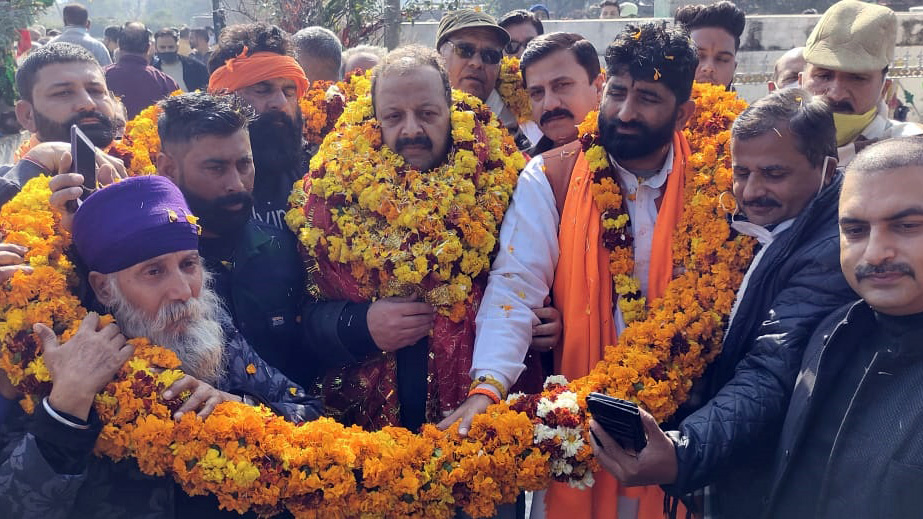
PDP spokesperson, Mohit Bhan said the Commission has skipped ground realities while drawing boundaries. They have done it from ivory towers on satellite maps, he believes.
“They want to divide and disempower the people of Kashmir. Habba Kadal had a good majority of Pandits but now they have disenfranchised them by dividing the constituency. There was a remote chance that someone from a community may have entered assembly given various electoral factors in Kashmir but now even that is gone,” Bhan said. Bhan’s leader, Mehbooba Mufti said it was an attempt to divide the people “on sectarian and social grounds”.
People’s Conference spokesman, Adnan Ashraf Mir said that the main objective seemingly is to disrupt the existing political structure, especially in Kashmir, which suits the narrative of a particular political party. “By obliterating certain constituencies and inventing new ones, the commission intends to disturb the political equilibrium and put the existing leadership at a disadvantage,” Mir said.
Sajad Lone said the exercise of delimitation was an attempt to disempower and disenfranchise the people of Kashmir. “Irrationalism is an ugly and a sad constant in the delimitation exercise,” he said.
The Apni Party founder Altaf Bukhari also rejected the proposals saying the process adopted by the panel was unfair and unscientific.
Communist leader and four-time MLA, Mohamad Yousuf Tarigami, who is also spokesperson of the PAGD said they have challenged the law under which the Commission was constituted. “Its constitutionality is under judicial scrutiny,” he said.
Regretting that the panel has not followed the set system – If the population would have been considered, Kashmir may have got more seats. “It is unacceptable to PAGD,” he said.
Congress’s Ghulam Nabi Monga also talks in the same language. “To change names is the work of BJP,” he said. “Even in Jammu, people are unhappy.”
Congress’s Jammu and Kashmir president, Ghulam Ahmad Mir said if the Commission is independent why the LT Governor is trying to be its spokesman. He said the leaked telephone conversation of BJPs Jammu and Kashmir with his disgruntled MLA regarding the merging of constituencies offers an idea of the autonomy of the Commission.
“It is the policy of BJP to demolish and divide Jammu and Kashmir,” Mir said. “It does not seem to be a report by a Supreme Court Judge or Chief Election Commissioner of India. It looks somebody is working in their names.”
Dr Sheikh Showkat, a political analyst and former head of the department of law and dean of the legal studies at the Central University of Kashmir opines that neutralizing “hostile” is the common practice in India. “It has been a practice in India that wherever there is the Muslim population in the majority they are segregated or their constituencies are reserved for Scheduled Castes,” Sheikh said. “That is why the representation (of Muslims) in parliament and assemblies remains low.”
Areas perceived to be hostile in electoral calculations are annexed to a larger area and dilute that capacity. “They could have merged Pir Panjal with Chenab divisions and created a Lok Sabha constituency where a Muslim would send its representative?”
Pitting The Two
The new cartography has pitted two of the region’s most marginalised communities against each other – the Gujjar and the Bakarwals, who are largely nomadic and also live in the mountains of Jammu and Kashmir, and the Paharis.
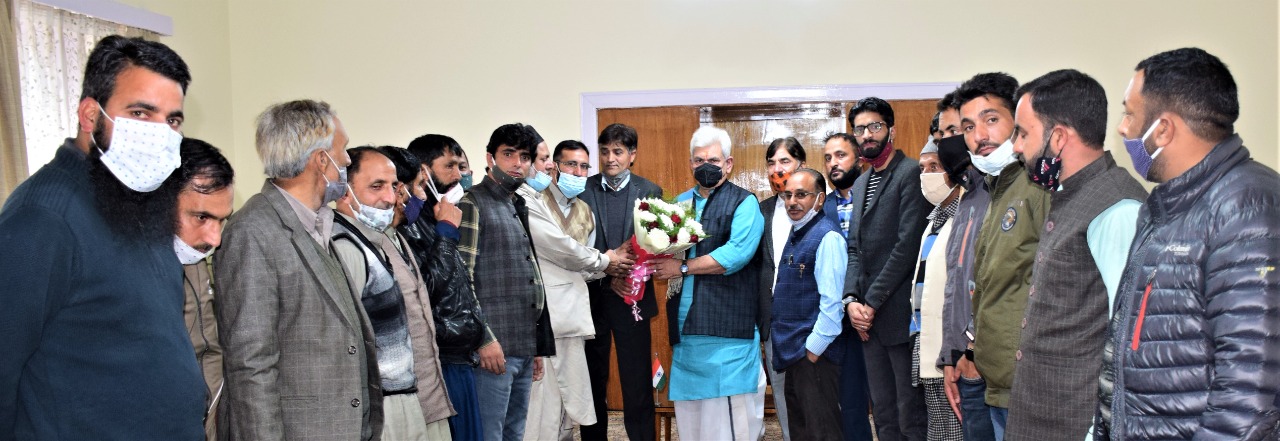
Zahid Parwaz Choudhary who leads the Jammu and Kashmir Gujjar Bakarwal Youth Welfare Conference alleged the commission has randomly demarcated and created constituencies. Our dominance has been diluted by selectively deploying benchmarks to resize electoral boundaries.
“Given our population, nine seats are not enough,” Choudhary said. “In the 2014 assembly elections, ST leaders won 15 seats even without a reservation.”
Choudhary said that Gujjars and Bakerwals got ST status after a protracted struggle. “If they are also included (in ST) where will we go?” Choudhary said, insisting the Paharis to be “upper castes”.















